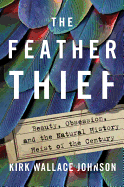
Feathers--who knew? At the turn of the 19th century, fashionable women in Paris and New York were parading under hats with as many exotic bird feathers as they could manage without toppling over. An ounce of snowy egret feathers in 1900 cost more than an ounce of gold. Adventurous bird harvesters swarmed South America and the Malay archipelago to feed the demand.
Fast forward 100 years. Obsessive salmon fly-tyers and collectors paid nearly $2,000 on eBay for authentic bird feathers. Protected by anti-poaching and conservation laws, most exotic wild birds of the world were off limits. Sure enough, a thief used the Willie Sutton method to go where the feathers were. In 2009, 22-year-old flautist and world-class fly-tyer Edwin Rist broke into the British Museum of Natural History, housed in a Rothschild mansion in the small Hertfordshire town of Tring. He made off with a suitcase full of carefully stored and catalogued 100-year-old bird carcasses, including some 70 New Guinea birds-of-paradise. It's not easy to fence dead birds, but Rist got away with his misdeed for almost two years before he got nabbed selling baggies of feathers on the Internet.
The Feather Thief is a story about Rist, as well as a history of early naturalists, evolution theory and the Victorian compulsion to collect the oddities of nature. Kirk Wallace Johnson took a peek into a world of dazzling natural variety and an underworld of subterfuge and crime. Endlessly fascinating and crackingly entertaining, The Feather Thief is the kind of true-crime narrative that gives Erik Larson's much-lauded The Devil in the White City a run for the money. --Bruce Jacobs, founding partner, Watermark Books & Cafe, Wichita, Kan.

